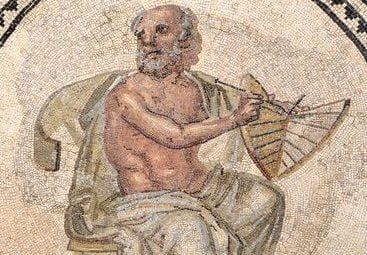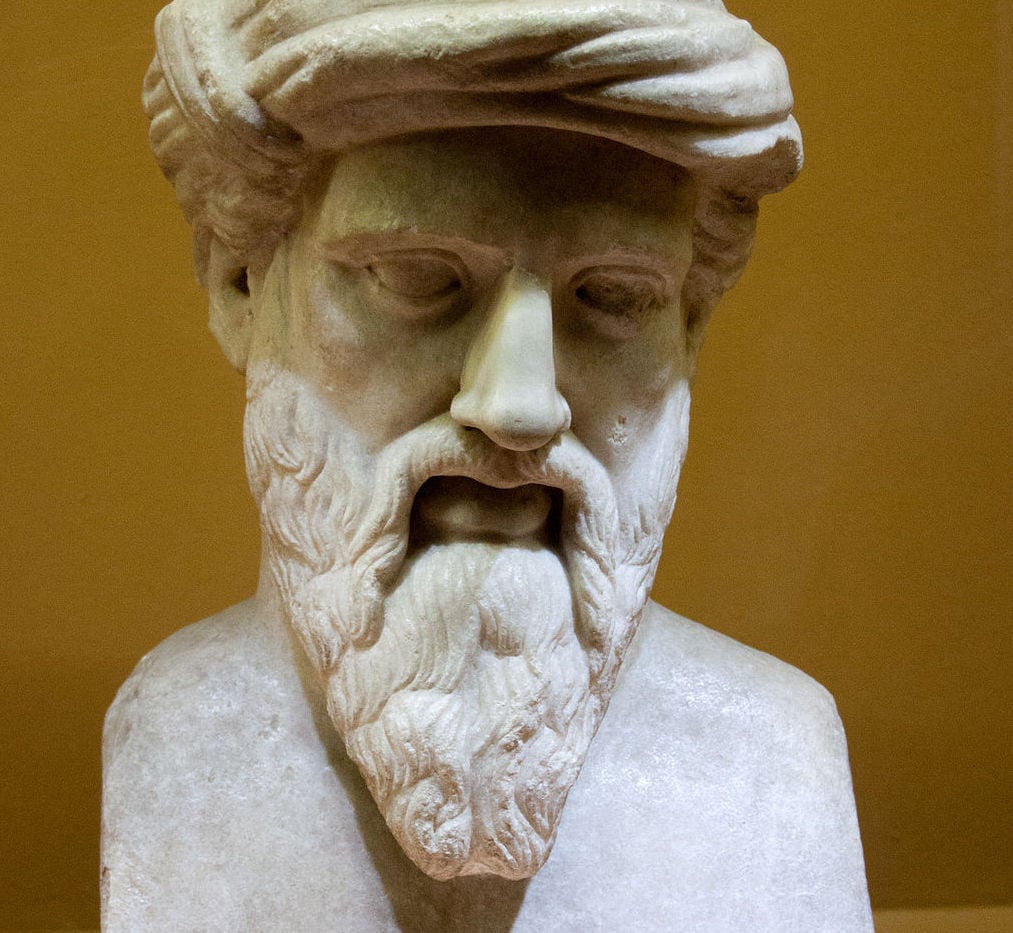
Theories depicting the shape of the earth swirled in embryonic form in the minds of Ancient Greek thinkers.
By Matthew Norman
Many pre-Socratic Greek philosophers were wrong about the form of our planet. Thales – founder of the Milesian School of natural philosophy, whom Aristotle regarded as the first philosopher in the Greek tradition – believed the earth was a flat disk which stayed afloat like a log in a massive body of water. This idea was developed by Anaximander, a student of Thales in Miletus who eventually succeeded him as master of the Milesian School, going on to create the first map of the world.
Early philosophers’ misconceptions of the earth’s shape
Anaximander’s hypothesis got us nearer to understanding the true structure of our blue and white orb, in that it gave the earth a third dimension. The second master of the Milesian School believed our planet was a shallow cylinder or ‘stone pillar’, with human beings inhabiting the flat plane at the top. He also argued that earth did not rest on anything or require any support; it floated because it is equidistant from all other things, and therefore in perfect balance.

Other pre-Socratic philosophers including Leucippus, Democritus, Anaximenes, Xenophanes of Colophon, Anaxagoras and Archelaus all subscribed to the flat earth theory, with the latter positing that the disk-like surface had a concave section in the middle like a bowl, to allow for the fact that the sun does not rise and set at the same time for everyone.
First concept of a spherical earth
It wasn’t until around 500BC – roughly 30 years before the birth of Socrates – that the concept of a spherical earth began to be floated around. Arguably a student of Anaximander, Pythagoras rendered earth a sphere largely for aesthetic rather than scientific reasons. He believed, like many Ancient Greeks, that the sphere was the most perfect shape, and thus the earth must be one.
Pythagoras attempts to find evidence

Pythagoras, the inventor of the Pythagorean theorem did however attempt to find evidence to support his assumption. The two things that eventually convinced him of his hypothesis were lunar eclipses and the fact that the horizon seemed to make ships disappear. The earth casts an unmistakable round shadow on the moon during a lunar eclipse, and when a ship returns to land onlookers will first see its mast tops, then its sails, and finally its hull. In this light Pythagoras surmised the earth must have a curvature.
Parmenides’ Philosophical Sphere
Following on from Pythagoras, Parmenides also took the view that the world was a sphere. His reasoning for a spherical terrene was philosophical. He believed the smooth spherical shape gave the earth perfect balance, and thus allowed it to hang at the center of a ‘spherical cosmos’.
In most Ancient Greek philosophical circles, the theory of a spherical earth was accepted by around the 5th century BC, and so the focus of natural philosophers changed from proving the shape of the earth, to discovering the size of the earth.
But it wasn’t until around 330BC – when Aristotle estimated the earth’s circumference – that an Ancient Greek made an attempt to measure the planet. The greatest student of Plato calculated the earth to be roughly 400,000 stadia around its entire curvature (stadia being an Ancient Greek unit of length, comprising 600 Ancient Greek feet or ‘podes’. The exact length is not known today, but historians estimate it to be somewhere between 150m and 210m).
Calculating Earth’s Curvature
The first real empirical evidence supporting the curvature of the earth came in around 240BC, from a polymath who eventually became the chief librarian at the Library of Alexandria: Eratosthenes. The great mathematician detailed his method in a book entitled On the Measure of the Earth, which, sadly, has not been preserved.
Most of what we know about Eratosthenes’ discovery comes from a work written by Cleomedes, a man whose name has been immortalised by a crater in the northeastern portion of the visible moon. It is within Cleomedes’ On the Circular Motions of the Celestial Bodies that we learn about Eratosthenes’ use of a vertical rod (gnomon) and knowledge of the summer solstice to – more or less accurately – calculate the circumference of our planet.
The key questions for subsequent scholars – particularly those who searched for a naturalistic theory rather than a theistic one – then became: How did our universe begin, what is the position of our planet within it, and what is the spatial nature of the other planets and the sun in relation to earth.
These questions fed the work of later astronomers such as Copernicus, Galileo, Kepler, Einstein and Stephen Hawking, and to this day, Ancient Greek thinkers are recognised as the architects of the study of physics and astronomy. And of course, the Ancient Greeks shaped the world in many other ways, too.
By Matthew Norman
See all the latest news from Greece and the world at Greekreporter.com. Contact our newsroom to report an update or send your story, photos and videos. Follow GR on Google News and subscribe here to our daily email!



